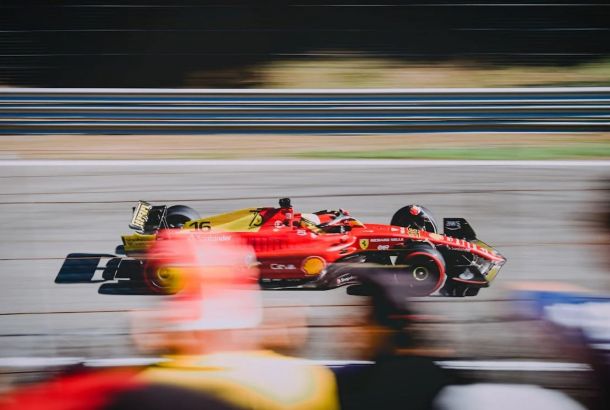The Wembley Way
Supporters of Manchester City and Liverpool will flock to North-West London this weekend in the hope of seeing their side lift the first meaningful trophy of the season in the Capital One Cup final at Wembley Stadium.
Both sides are no strangers to the ‘home of English football’; City have appeared eight times at the new Wembley since its completion in 2007, while Sunday will mark the Reds’ fifth visit. The two have endured success and failure—the Citizens beat Stoke City in 2011 to win their first FA Cup in over 40 years, but lost in the same competition to minnows Wigan Athletic in 2013, while Liverpool lifted the League Cup against Cardiff City in 2012 but lost to Aston Villa in last season’s FA Cup semi-finals.
Having been demolished in 2002 and rebuilt five years later, Wembley Stadium remains synonymous with the game of football as the most famous and prestigious arena in the world. Pelé, the world’s all-time leading goal scorer and erectile disfunction spokesperson, declared Wembley to be “the cathedral of football. It is the capital of football and it is the heart of football.”
At a cost which spiralled to £798m, being cited as the “heart of football” is probably the least the Football Association (FA) should expect for their money. For that amount the entire ground should be plated with gold and be able to shift Transformers style into a new design every season to keep things interesting.
Alas, the FA took a different approach. They ended up constructing a 90,000 seater circular stadium with a great big 1,033 ft arch connecting one side to the other.
That all seems perfect, right? The biggest stadium in the country? Check. A new home for the England national team? Check. A piece of architecture that can be seen across much of London? Check.
But Wembley Stadium is not the perfectly put together footballing behemoth that some would have you believe. A series of flaws mean that those travelling to support their team this Sunday may not have the ultimate day out.
Firstly, the approach to the ground is uninspiring. The fabled Wembley Way links the tube station to the stadium but it remains remarkably ordinary—a concrete walkway filled with throngs of people punctuated sporadically by the odd food stand or half-and-half scarf stall. Aside from that the area is a veritable wasteland of empty spaces and carparks. It’s a shame that such a ludicrous amount of money was spent on the structure itself while the surrounding area was left so mundane.
Wembley is far less impressive than some of Europe’s other major stadiums. It lacks the sense of grandeur that takes the breath away as you climb the concourse stairs and get your first glimpse of Old Trafford. It doesn’t have the character and atmosphere of Anfield. It can’t compete with the bold architecture which bestows the air of a coliseum on the Bernabéu, nor can it match the sheer enormity of Barcelona’s Camp Nou.
In fact, its circular design and industrial estate aesthetic bear a stronger resemblance to a steroid-injected version of Bolton Wanderers’ Macron Stadium and the other assorted soulless bowls that were churned out regularly by mediocre football clubs in the early 2000s.
Once inside, the FA do their best to strangle any possible atmosphere out of the occasion with ‘entertainment’ that renders cup finals more similar to an episode of the X Factor than a football game. Fireworks explode as the players enter the pitch, and EDM blares out of the PA system at every interval. Supporters can’t generate much noise when the likes of Avicii’s ‘Levels’ are drowning them out, as if they’re at a town centre Baa Bar instead of one of the supposed pinnacles of sport.
For the 2012 FA Cup final the FA even had a go at creating a pseudo-Superbowl half-time show, albeit before kick-off, with a musical act brought onto the pitch to ‘entertain’ the crowd in attendance and those watching at home. But whereas the Americans get the likes of Beyoncé and Bruno Mars, the best booking the FA could manage was, erm, Hard-Fi.
Hard-Fi, with their inoffensive, non-descript rock and roll. Hard-Fi, with that one song that came out in about 2005 that you vaguely remember but never actually liked. Hard-Fi, with 90,000 people stood around them asking: “Who the bloody hell are they?”
Furthermore, between a third and a half of tickets are withheld by the FA for non-team-specific supporters, depending on the occasion. The majority of these are swallowed up by Club Wembley members, who pay a premium for increased hospitality, the kind of people that Roy Keane famously christened “the prawn sandwich brigade”. They sit in the second tier, with supporters of the competing teams above and below them, meaning the atmosphere struggles to travel across the whole of the stadium.
That’s not to say you can’t still have a great time at Wembley. One of the best goal celebrations I’ve been involved in came after Andy Carroll met Craig Bellamy’s cross with £35m worth of sweaty Geordie forehead to give Liverpool a victory against Everton that put them into the FA Cup final. The stranger next to me was so overcome with adrenaline that he bit me on the arm, leaving a mark that lasted for a few days. It’s just a shame that such euphoria comes after much frustration with the FA’s attempts to make enjoying yourself as difficult as possible.
Manchester City and Liverpool fans should most certainly be looking forward to their trip to the capital this weekend, but the myths which surround Wembley Stadium mean that it suffers from overhype and ends up rather underwhelming. It may well be the most famous football ground in the world but it is by no means the best, and the FA’s insistence upon turning the game into a television show does its best to kill any atmosphere.







